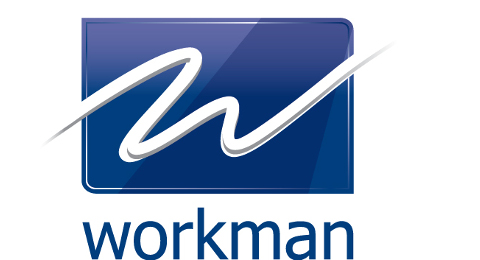Beehives and Biodiversity Improvements Add Value at Roaring Meg
05 September 2018Beehives and Biodiversity Improvements Add Value at Roaring Meg
05 September 2018At Roaring Meg Shopping Park in Stevenage, Aberdeen Standard Investments and Workman are working together on a series of biodiversity initiatives, which are opening up exciting opportunities to engage with the local community and occupiers. These include introducing beehives, enhancing biodiversity in a small stretch of woodland and running a creative writing competition for local schoolchildren.
Key Facts
- MAKING ROARING MEG AN EVEN BETTER PLACE TO VISIT
- CONTRIBUTING TO STEVENAGE’S BIODIVERSITY ACTION PLAN AIMS
- ENGAGING WITH LOCAL SCHOOLS AND RAISING LOCAL AWARENESS OF THE PARK
Situation
Roaring Meg is a 33,000m2 shopping park in Stevenage, owned by Aberdeen Standard Investments (ASI) and managed by Workman. The Park is home not only to 25 retail and leisure units, but also to 1.5 acres of woodland, part of a much larger ancient woodland, known as Monk’s Wood.
As part of its integration of environmental, social and governance (ESG) factors across all asset classes, ASI approached Workman to explore biodiversity and community opportunities linked to Roaring Meg’s woodland and unique name, which lends itself to imaginative themes.
Short-term aims agreed between ASI and Workman included:
- Creating biodiversity credentials that Roaring Meg could be proud of.
- Developing a community initiative of benefit and interest to local schools.
Over time, they aim to bring these biodiversity and community initiatives together to further raise local awareness and attract visitors.
Actions
Biodiversity improvements included:
- Installing two beehives to provide a focal point for the biodiversity projects. Honey bees are an essential part of the British countryside, pollinating crops and wildflowers. In recent years, the UK’s honey bee population has seen a dramatic decline. This is due to a combination of stresses, including loss of habitat and food sources along with exposure to pesticides, diseases and the effects of climate change.
- Seeding wildflowers, such as Knapweed for pollinators; Common Teasel for birds; edible Self-heal or Woundwort; and Yellow Rattle, which restricts grass growth and so allows more diverse species to thrive.
- Planting native species, such as Hazel, which provides leaves to feed caterpillars, nuts for dormice and shelter for ground-nesting birds; Holly, which offers nesting for birds and dry leaf litter where small mammals hibernate; and Honeysuckle, popular with many butterfly species, including White Admiral caterpillars, and providing seasonal berries for birds including thrushes, warblers and bullfinches.
- Creating log piles within the woodland, using old felled trees to form damp, dark habitats for woodlice, beetle grubs and wood wasps.
- Coppicing some existing trees, a traditional woodland management technique that involves cutting trees at intervals, typically every five to 20 years. This creates conditions suitable for many plants, insects and birds, particularly those requiring open woodland habitats.
- Restoring sections of ancient hedgerows, which provide natural corridors that enable the migration of plants and wildlife, as well as screening, boundary definition and aesthetic interest. This included pruning overgrown older hedgerows to help rejuvenate them and planting new sections.
Workman also launched a creative writing competition, working with marketing partner BeWonder. Children at over 20 local primary schools were invited to submit entries inspired by the Park’s unusual name, Roaring Meg, which lends itself to imaginative themes. Occupiers Partyman and Hobbycraft donated prizes, including vouchers. Nick Hobbs, Sustainability & Wellbeing Manager at Workman, presented the winners with their awards.
Building on the success of the initial biodiversity and community projects, the team is exploring opportunities to:
- Introduce visits to the beehives for small groups, using project partners Cardona and Son to provide educational talks.
- Bottle the bees’ honey, for occupiers to offer to customers and staff for charity donations and tastings.
- Build links with local schools and develop educational resources.
- Invest to unlock the wider potential of the woodland for use by schools, local community groups and visitors.
Financials
- Around £8,000 set-up costs for the apiary and £7,000 annual running costs, including the hives, fencing, signage, equipment, first aid courses, insurance and beekeeping services. This was funded by ASI.
- Around £20,000 landscaping costs for biodiversity improvements.
- £1,400 in costs, to run the creative writing competition.
Benefits
- Making Roaring Meg an even better place to visit by enhancing the natural environment. Connecting with the natural world is a strong human instinct, which many studies show boosts wellbeing.
- Creating new opportunities to engage with occupiers and customers.
- Potential to attract visitors in the future; for example, for bee talks and woodland visits.
- Building local awareness through the creative writing competition and visitor signage about biodiversity improvements.
Contributing to Stevenage’s Biodiversity Action Plan aims:
- Increase Stevenage's biodiversity by conserving, restoring, recreating and reconnecting wildlife habitats.
- Increase awareness and appreciation of Stevenage's wildlife.
- Encourage participation in conserving its biodiversity.
- Ensure that nature is close to everyone's doorstep.
Challenges and Achievements
HEALTH AND SAFETY
How to safely introduce an apiary in a busy shopping environment?
Due diligence before introducing the apiary included:
- Carrying out a full risk assessment of the proposed work and verifying that the Park’s liability insurance covers the addition of beehives on site.
- Erecting enclosure fencing to a height of around 7ft, so that it is tall enough to both prevent people climbing over and to ensure the bees fly out above head height when moving off to forage.
- Installing signage in the beehive enclosure that provides step-by-step guidance on what to do if a bee stings a baby, child or adult.
- Delivering a first aid course, with a focus on anaphylactic shock, to Park staff and occupiers who expressed interest, free of charge. This was provided by St John’s Ambulance.
- Providing sting removal kits in the beehive enclosure and giving them to occupiers who opted to receive them, free of charge.
ENGAGEMENT
How to engage with occupiers and customers?
Workman prepared letters for occupiers explaining the plans and works. The Park Manager hand delivered these to each occupier, opening up dialogue and discussing any questions or concerns. Once due diligence was covered, the response was generally very positive, with occupiers welcoming the biodiversity and community projects. Information boards were also created and positioned around Roaring Meg to raise customer awareness of the biodiversity improvements. Put together by a local designer, these provide a summary of the key improvements and explain the benefits. Signage on the outside of the bee enclosure warns people of the presence of bees in the vicinity. Download visitor information on biodiversity
APIARY
How to manage beehives in a retail environment?
Choosing the right local partner to care for the bee population is key. Workman arranged a site visit by a local business that offers beekeeping services, Cardona and Son. They confirmed that the woodland would be an appropriate space for two beehives and identified a suitable location, an area raised up on a ridge in the woodland. Their proposal covers weekly visits during high season, up to eight call outs and winter shut down of the hives. They also provided guidance on improvements to make the area better for the bees, including trimming back vegetation to let in more light through the woodland canopy. The Park’s landscaping partners designed and constructed the enclosure for the hives. The bees were introduced to their new home in October 2017 and left to settle in for the winter before producing Roaring Meg’s first harvest of honey in August 2018. Workman and ASI now plan to partner up with Roaring Meg’s occupants to sell the honey and raise money for local wildlife and biodiversity charities.
Find out more
Dan Grandage
Head of ESG, Real Estate
Aberdeen Standard Investments
E: dan.grandage@aberdeenstandard.com
T: 020 3680 0265
Vicky Cotton
ESG Director
Workman
T: 020 7227 6303
*Please note that the information on this page was supplied by the BBP Member and the BBP assumes no responsibility or liability for any errors or omissions in the content


